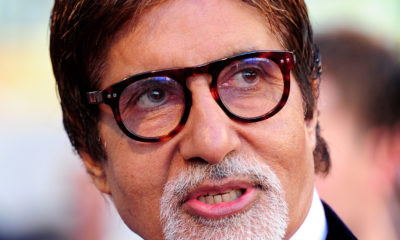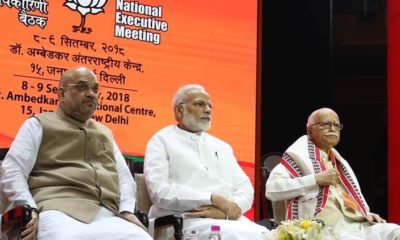Feature
Show us the money, say developing nations at climate change meet

By Hardev Sanotra
Paris: As negotiations grind down to the last day on Friday, the hopes for an agreement seemed to be stuck on one major point-money. Unless the developed countries come out with specific commitment, the climate change conference may not yield an important agreement, say developing countries.
“Hollow promises and hollow slogans won’t work,” Indian Environment, Forests and Climate Change Minister Prakash Javadekar told Indian reporters here, following his meeting with the US delegation led by Secretary of State John Kerry. The minister said the developed countries have to come up with the money if they want to see concrete progress in Paris.
He said India delegation had a good meeting with the US officials and the two sides had seen a “convergence of ideas”, on broad terms adding that the final text of the agreement would depend on what the negotiators arrive at.
Asked if India agreed with the position taken by island nations that the global temperature rise cap should be lowered to 1.5 degree centigrade from earlier limit of 2 degrees, Javadekar said that they did not have any problem with the new limit. However, he said that just lowering the limit would not help, and it had to be followed up by action.
“Who will take that action,” he asked rhetorically answering that its the Western countries which had to agree to this and come up with more money to make developing nations help cope with this.
Asked how he expected an increase when the existing requirement of $100 billion contribution till 2020 by developed countries was not being adhered to, the minister said that was the crucial issue. “There is no money on the table so far,” he said although stating that he was optimistic of a comprehensive agreement by Friday.
Many scientists have predicted that with global temperature rising above two degrees over since the industrial revolution of 1800s, mankind may face catastrophic climate events. So far, the global temperature has risen 0.8 degrees in a little over a century.
Javadekar said that the first draft agreement floated by the French presidency, the hosts of the 21st climate change conference called the CoP21, was not satisfactory as it had not given adequate importance to the principle of “common but differentiated responsibilities (CBDR)”.
This principle means that developed countries and developing ones have different responsibilities to tackle the after effects of climate change.
Javadekar said the principle of CBDR was mentioned much below and not emphasised upon enough. He said he was hopeful that in the second draft, expected to be released by the French presidency later in the afternoon would take care of it.
Last evening, negotiations among parties went late into the night and some kind of understanding seems to have emerged on several points, though on crucial issues of money, technology transfer and emissions, there still appears to be different positions among the developing countries and the developed ones. The second draft is expected to narrow the differences.
Javadekar, also asked whether there was pressure imposed upon India by the US in the full meeting in the morning, said: “India does not take any pressure,” adding though that it was ready to engage on all issues. He said what India was looking for in Paris was basically “climate justice” for all the people and especially the 1.2 billion people of India.
Earlier, the minister had said that Group of 77 developing nations stood together along with China to ensure that an equitable and fair agreement arises out of Paris where the carbon emissions are reduced but developing countries are given enough space to grow. Carbon dioxide, an ingredient of fossil fuels, and a green-house gas is said by scientist to warm up the plant.
The United Nations’ Intergovernmental panel on climate change says that human beings are responsible for the major portion of global warming.
Entertainment
Meghalaya Reserves Legalized Gambling and Sports Betting for Tourists

The State Scores Extra High on Gaming-Friendly Industry Index
Meghalaya scored 92.85 out of 100 possible points in a Gaming Industry Index and proved to be India’s most gaming-friendly state following its recent profound legislation changes over the field allowing land-based and online gaming, including games of chance, under a licensing regime.
The index by the UK India Business Council (UKIBC) uses a scale of 0 to 100 to measure the level of legalisation on gambling and betting achieved by a state based on the scores over a set of seven different games – lottery, horse racing, betting on sports, poker, rummy, casino and fantasy sports
Starting from February last year, Meghalaya became the third state in India’s northeast to legalise gambling and betting after Sikkim and Nagaland. After consultations with the UKIBC, the state proceeded with the adoption of the Meghalaya Regulation of Gaming Act, 2021 and the nullification of the Meghalaya Prevention of Gambling Act, 1970. Subsequently in December, the Meghalaya Regulation of Gaming Rules, 2021 were notified and came into force.
All for the Tourists
The move to legalise and license various forms of offline and online betting and gambling in Meghalaya is aimed at boosting tourism and creating jobs, and altogether raising taxation revenues for the northeastern state. At the same time, the opportunities to bet and gamble legally will be reserved only for tourists and visitors.
“We came out with a Gaming Act and subsequently framed the Regulation of Gaming Rules, 2021. The government will accordingly issue licenses to operate games of skill and chance, both online and offline,” said James P. K. Sangma, Meghalaya State Law and Taxation Minister speaking in the capital city of Shillong. “But the legalized gambling and gaming will only be for tourists and not residents of Meghalaya,” he continued.
To be allowed to play, tourists and people visiting the state for work or business purposes will have to prove their non-resident status by presenting appropriate documents, in a process similar to a bank KYC (Know Your Customer) procedure.
Meghalaya Reaches Out to a Vast Market
With 140 millions of people in India estimated to bet regularly on sports, and a total of 370 million desi bettors around prominent sporting events, as per data from one of the latest reports by Esse N Videri, Meghalaya is set to reach out and take a piece of a vast market.
Estimates on the financial value of India’s sports betting market, combined across all types of offline channels and online sports and cricket predictions and betting platforms, speak about amounts between $130 and $150 billion (roughly between ₹9.7 and ₹11.5 lakh crore).
Andhra Pradesh, Telangana and Delhi are shown to deliver the highest number of bettors and Meghalaya can count on substantial tourists flow from their betting circles. The sports betting communities of Karnataka, Maharashtra, Uttar Pradesh and Haryana are also not to be underestimated.
Among the sports, cricket is most popular, registering 68 percent of the total bet count analyzed by Esse N Videri. Football takes second position with 11 percent of the bets, followed by betting on FIFA at 7 percent and on eCricket at 5 percent. The last position in the Top 5 of popular sports for betting in India is taken by tennis with 3 percent of the bet count.
Local Citizens will Still have Their Teer Betting
Meghalaya residents will still be permitted to participate in teer betting over arrow-shooting results. Teer is a traditional method of gambling, somewhat similar to a lottery draw, and held under the rules of the Meghalaya Regulation of the Game of Arrow Shooting and the Sale of Teer Tickets Act, 2018.
Teer includes bettors wagering on the number of arrows that reach the target which is placed about 50 meters away from a team of 20 archers positioned in a semicircle.
The archers shoot volleys of arrows at the target for ten minutes, and players place their bets choosing a number between 0 and 99 trying to guess the last two digits of the number of arrows that successfully pierce the target.
If, for example, the number of hits is 256, anyone who has bet on 56 wins an amount eight times bigger than their wager.























